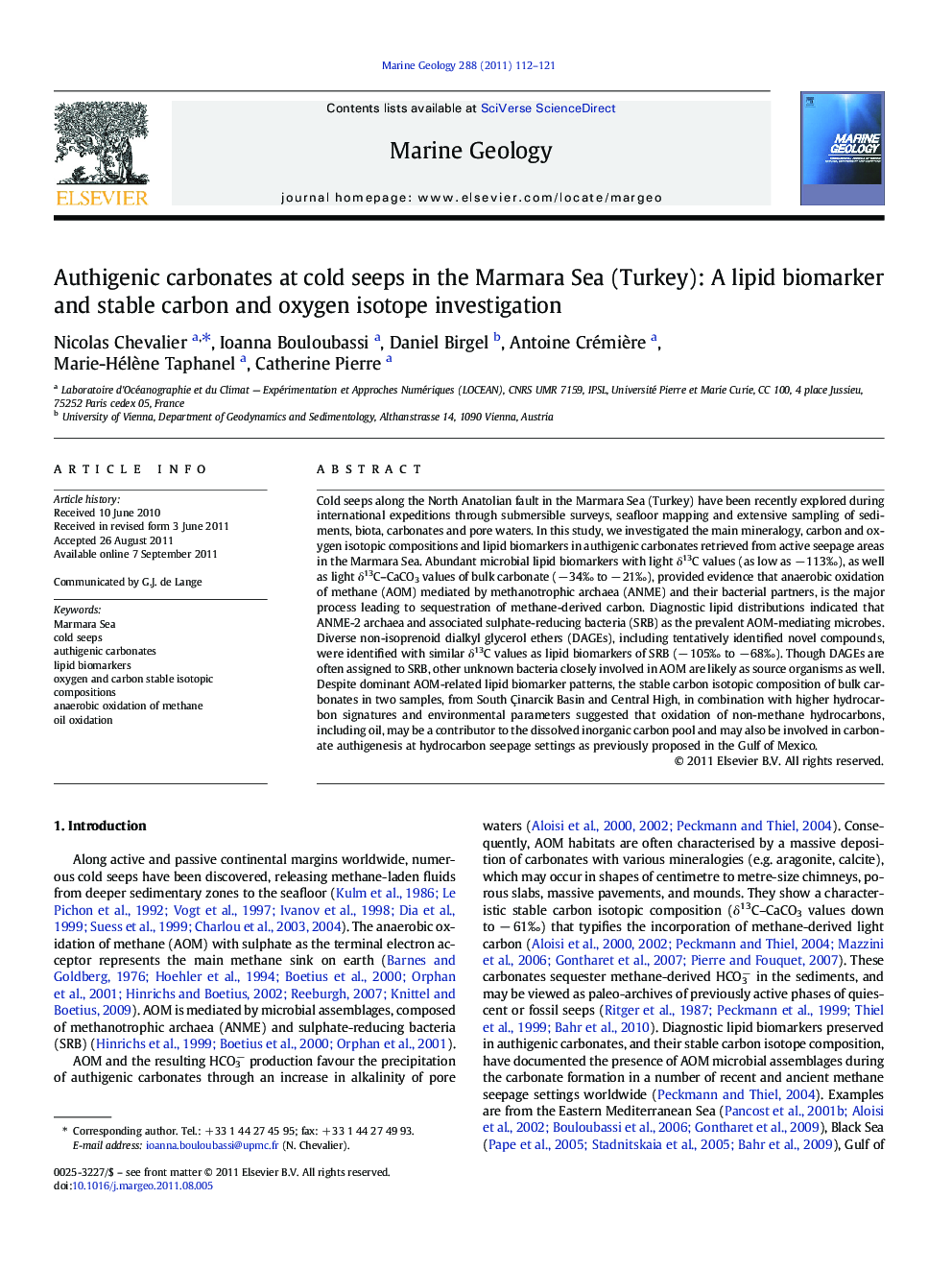| Article ID | Journal | Published Year | Pages | File Type |
|---|---|---|---|---|
| 4718704 | Marine Geology | 2011 | 10 Pages |
Cold seeps along the North Anatolian fault in the Marmara Sea (Turkey) have been recently explored during international expeditions through submersible surveys, seafloor mapping and extensive sampling of sediments, biota, carbonates and pore waters. In this study, we investigated the main mineralogy, carbon and oxygen isotopic compositions and lipid biomarkers in authigenic carbonates retrieved from active seepage areas in the Marmara Sea. Abundant microbial lipid biomarkers with light δ13C values (as low as − 113‰), as well as light δ13C–CaCO3 values of bulk carbonate (− 34‰ to − 21‰), provided evidence that anaerobic oxidation of methane (AOM) mediated by methanotrophic archaea (ANME) and their bacterial partners, is the major process leading to sequestration of methane-derived carbon. Diagnostic lipid distributions indicated that ANME-2 archaea and associated sulphate-reducing bacteria (SRB) as the prevalent AOM-mediating microbes. Diverse non-isoprenoid dialkyl glycerol ethers (DAGEs), including tentatively identified novel compounds, were identified with similar δ13C values as lipid biomarkers of SRB (− 105‰ to − 68‰). Though DAGEs are often assigned to SRB, other unknown bacteria closely involved in AOM are likely as source organisms as well.Despite dominant AOM-related lipid biomarker patterns, the stable carbon isotopic composition of bulk carbonates in two samples, from South Çinarcik Basin and Central High, in combination with higher hydrocarbon signatures and environmental parameters suggested that oxidation of non-methane hydrocarbons, including oil, may be a contributor to the dissolved inorganic carbon pool and may also be involved in carbonate authigenesis at hydrocarbon seepage settings as previously proposed in the Gulf of Mexico.
► Lipid biomarkers and stable isotopes were studied in Marmara sea carbonates. ► Anaerobic oxidation of methane (AOM) triggered carbonate authigenesis. ► ANME-2 archaea and bacteria (SRB) are the dominant AOM-mediating microbes. ► Anaerobic oxidation of higher hydrocarbons likely contributed to carbonate formation.
